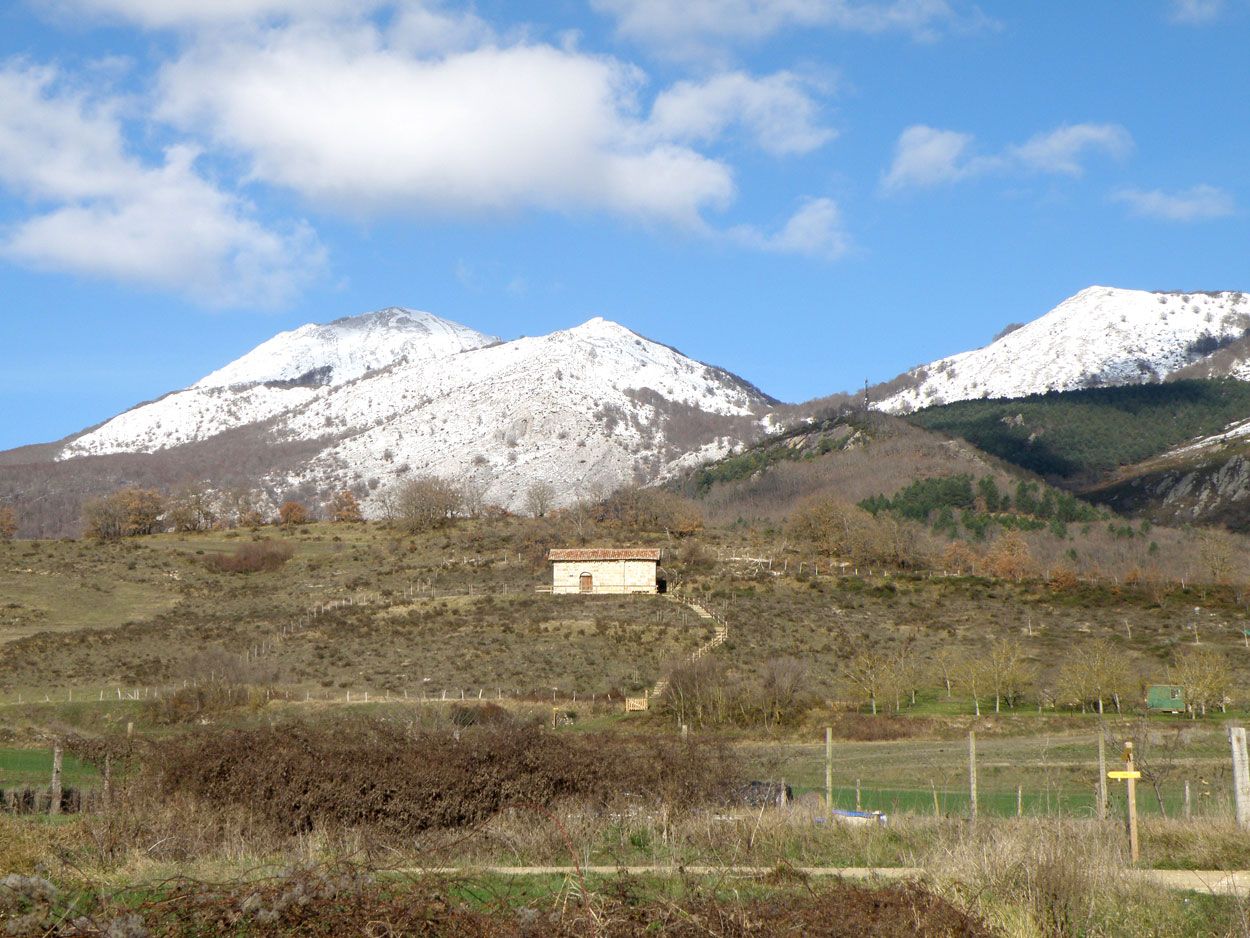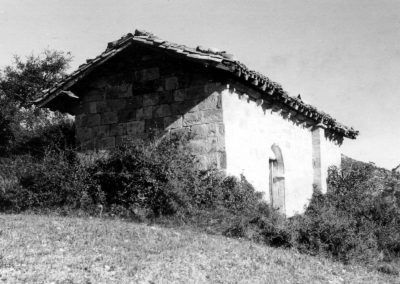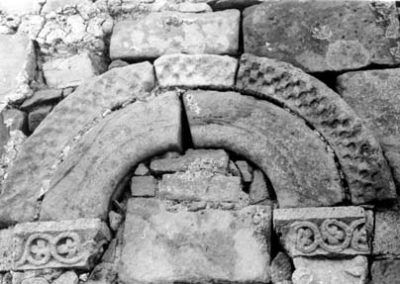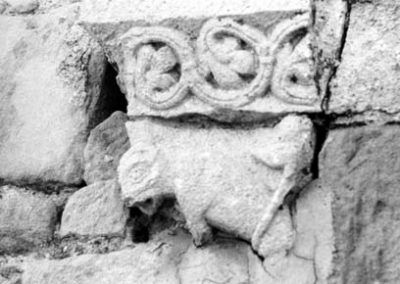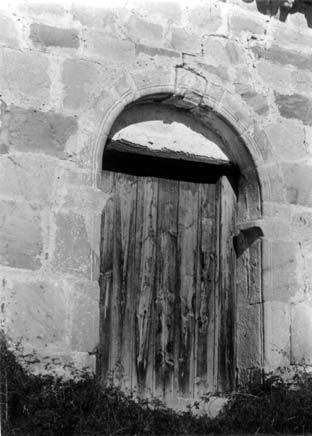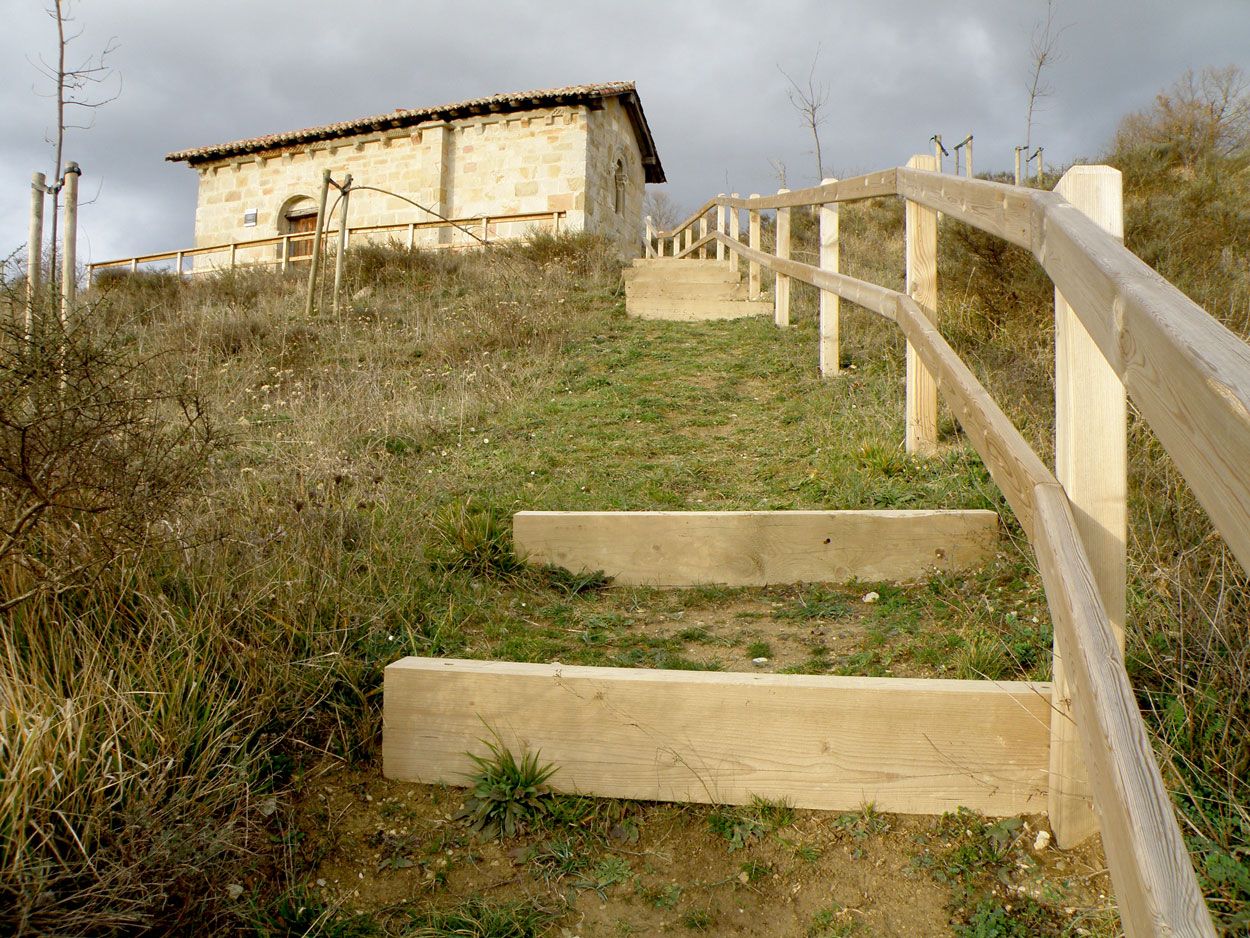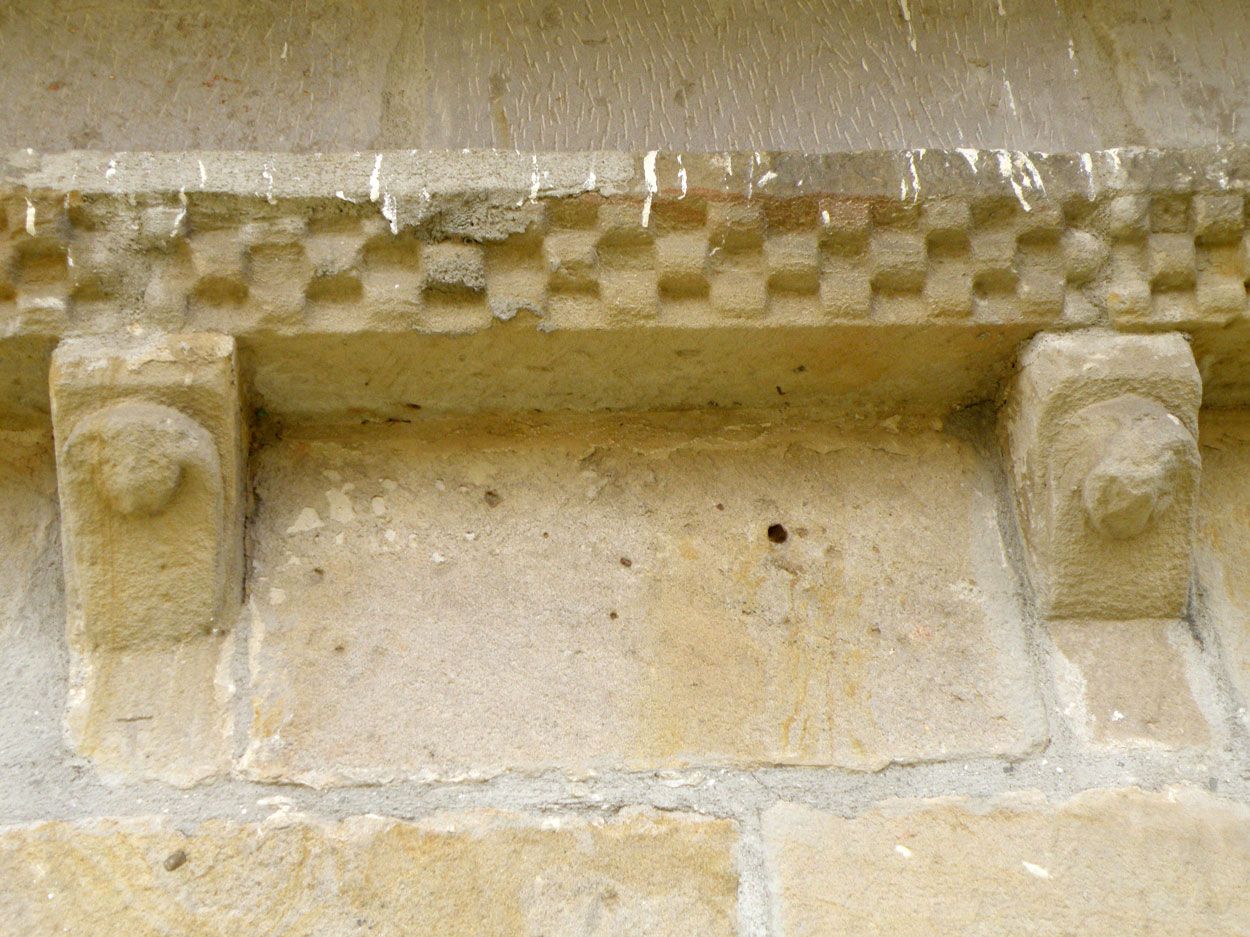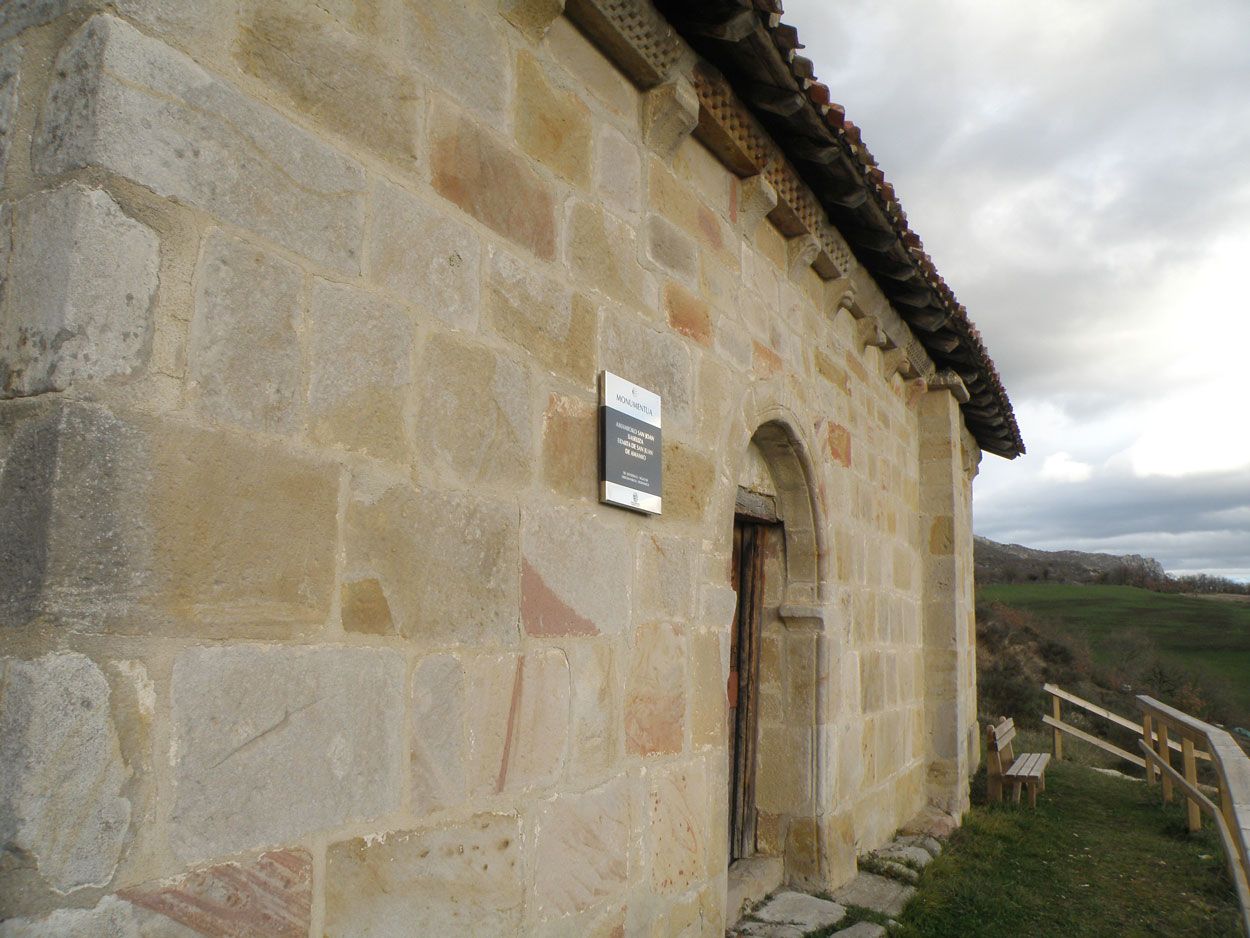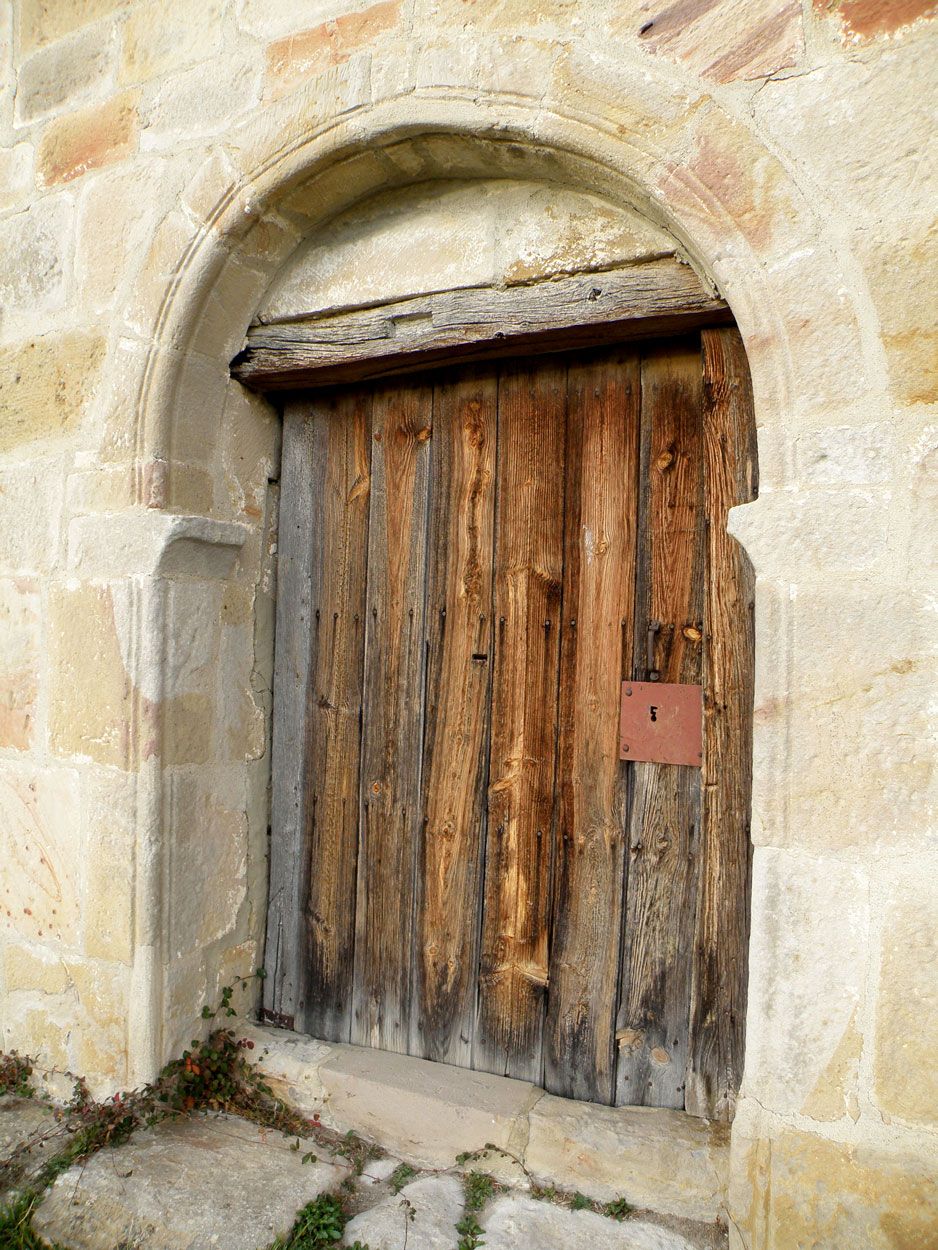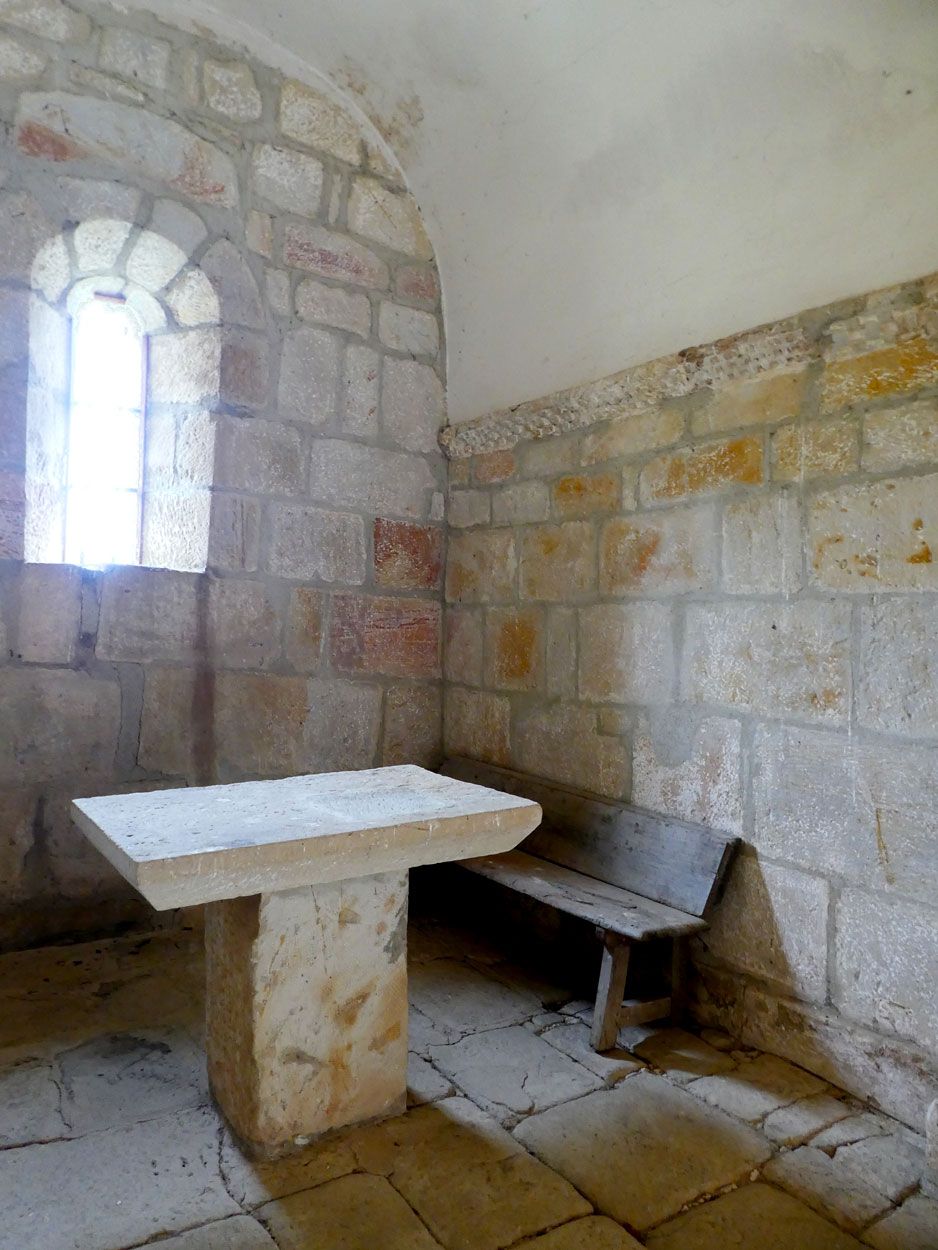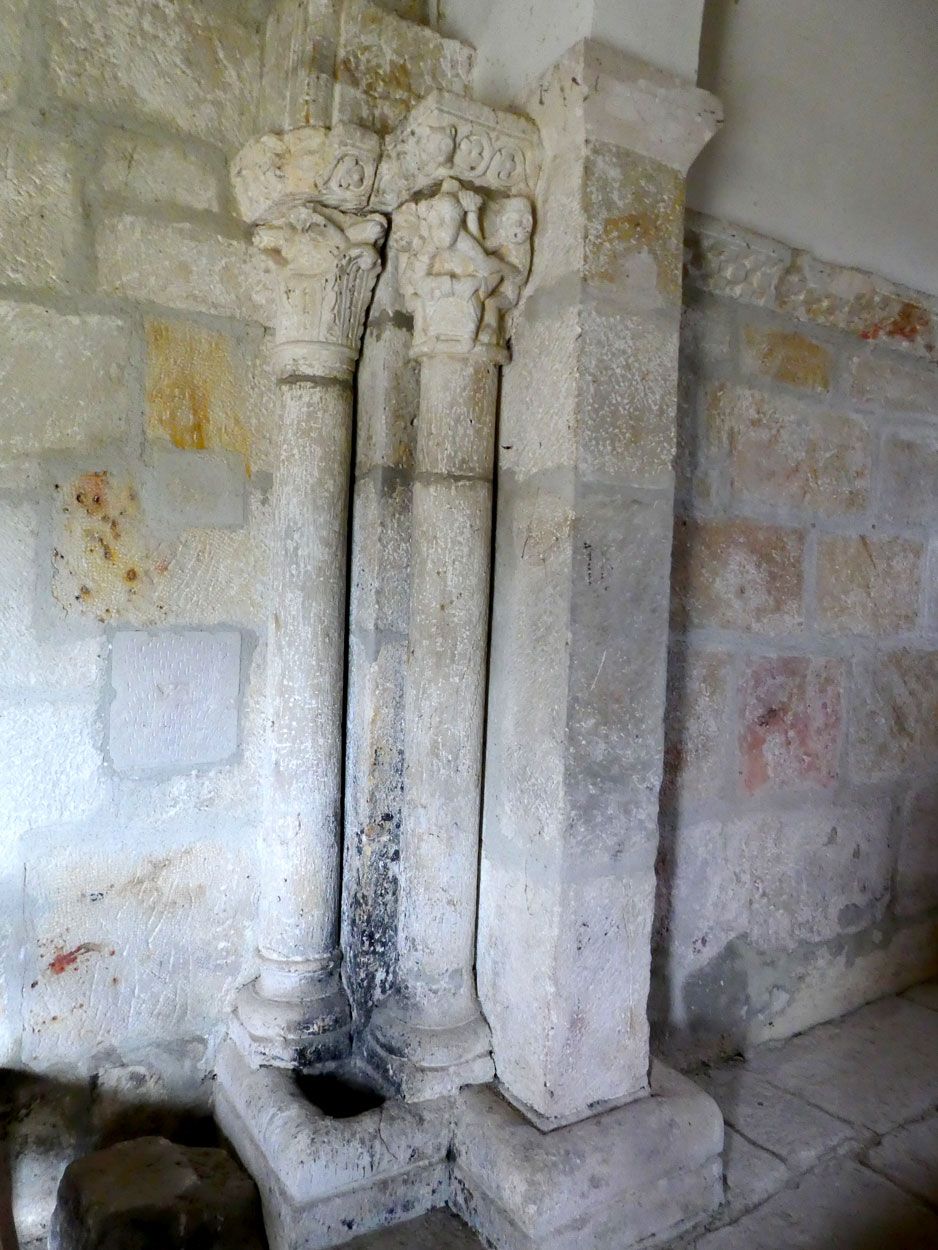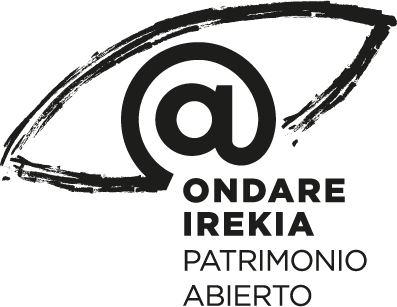
A digital gate open to heritage

INDEX
- Introduction
- Video
- 360º Images
- The abandoned village of Amamio
- Old photographs
- About the hermitage
- Location
Introduction
Saint John of Amamio is a beautiful Romanesque hermitage of the 12th century that dominates the landscape from above. As we approach the hermitage through the path that links it to the nearby town of Araia, we find ourselves on a somewhat uncomfortable location, in the middle of a steep slope. This would cause certain maintenance problems to the building throughout its history. This small hermitage is usually set as one of the most eloquent examples of what a church of a small village would be like in the Romanesque centuries in Álava, since, as it was abandoned a few centuries after its creation, there were no major renovations or remodellings that would vary its appearance too much.
Video
360º Images
The abandoned village of Amamio
The disappeared town of Amamio appears in the document Reja de San Millán, and paid one reja (tithe) under the name of Hamamio. The inhabitants left the small village and moved to the villages of the valley around the 14th century. It is likely that one of the reasons for the depopulation of the village was precisely its location, advantageous in times of uncertainty, but impractical in times of prosperity, since the slope makes cultivation difficult. There would be practically nothing left of the village in the 16th century, as the temple is cited as a hermitage in the visit of Licenciado Gil. Nevertheless, in recent remodelling works, some remains of the old medieval cemetery associated with this village appeared next to the north wall. Since it was relegated from parish church to hermitage, the councils of Araia and Albéniz took charge of its custody and maintenance, both getting together in this enclave on the feast of Saint John.
The old photographs taken in the middle of the last century show us the image of a hermitage in a critical state of preservation. The general structure was still standing, but it presented significant damage caused by its almost total abandonment. The eastern window, one of the jewels of the church, was partially bricked up and it could be seen how it was reassembled a bit clumsily after some intervention. Luckily, the building resisted until the modern restorations started and, today, the temple can be seen in all its splendour.
Saint John’s hermitage
Exterior
The hermitage consists of a single small nave that has not gone through many interventions over time, except the appropriate preservation work. One of the most outstanding pieces of the exterior is the beautiful apse window. On one of its capitals, carved with great mastery, we see an eagle from the front with the wings extended downwards, holding on to the necking with its claws. On the other, there are two lion bodies with the tail between the hind legs that share a head on the corner. Both rest their front legs on a kind of sphere in the middle of the capital. The cornice is decorated with vegetal rinceaux and a checkered arch is set out over the simple window.
Inside the small space, the small straight east end stands out, in which the checkered cornices that mark the springing point of the old disappeared vault still remain. On its place, we see a somewhat crooked recent covering that shows the pressures that the hermitage suffers due to the pressure of the mountain soil. The rest of the temple is covered with recently created wooden roofs.
The hermitage has survived to the present day without altarpieces and liturgical furniture but, in the presbytery, the remains of two columns topped by two beautiful capitals crowned by a cornice with vegetal rinceaux endure. Over them, we can see the springing of some voussoirs with the same flutes as the rebuilt arch of the current temple door. Therefore, we can deduce that, thanks to this coincidence and to the height of the columns, they are remains of the original facade.
Until now, this trace had been identified as part of a triumphal arch that gave access to the presbytery, although everything indicates that it is the left side of the old facade, rescued among the rubble and preserved by the former neighbours inside the hermitage itself.
Location
Current photographs: © Alava Medieval / Erdi Aroko Araba.
Old photographs: Archive of the Historical Territory of Álava.

